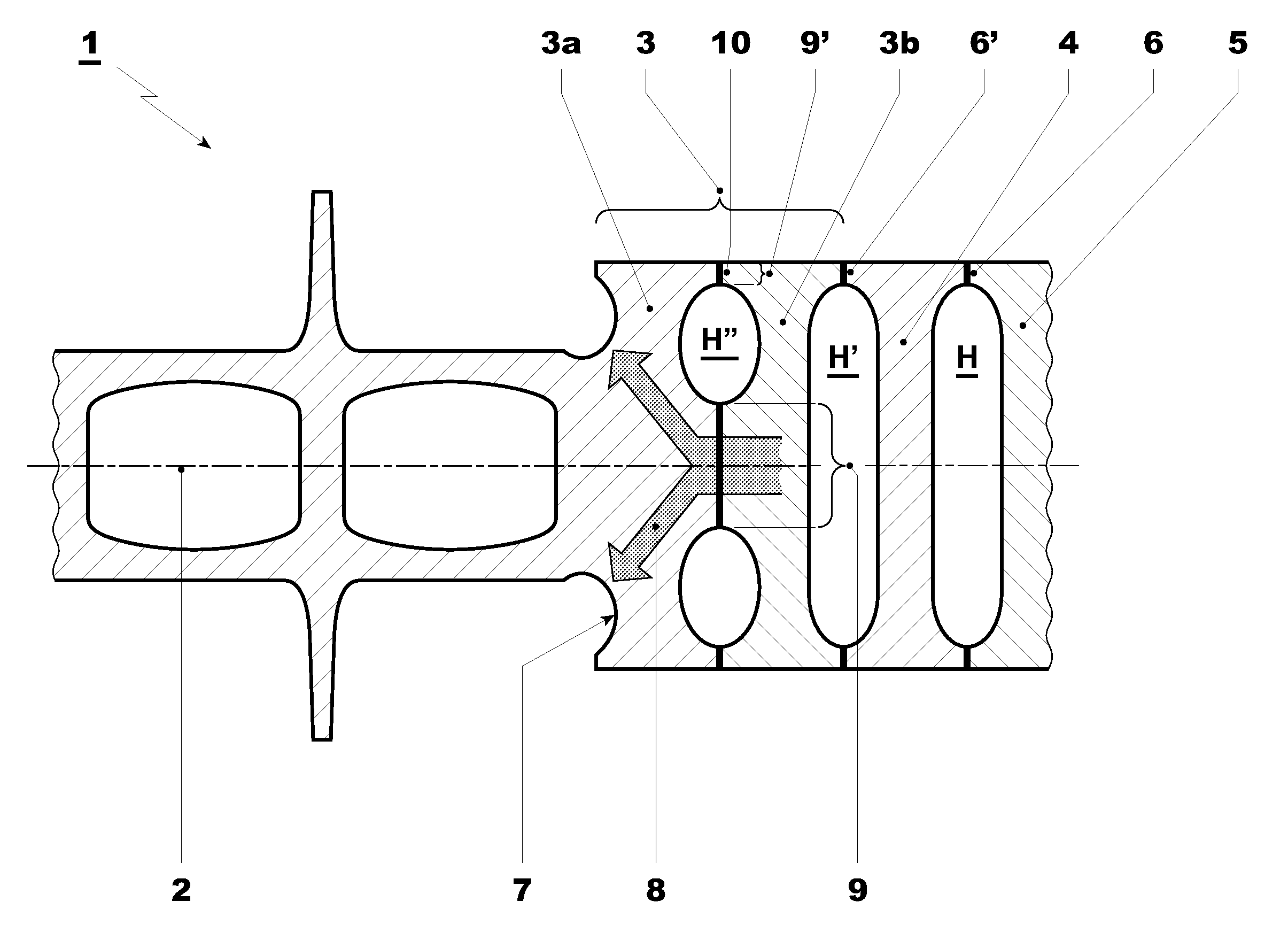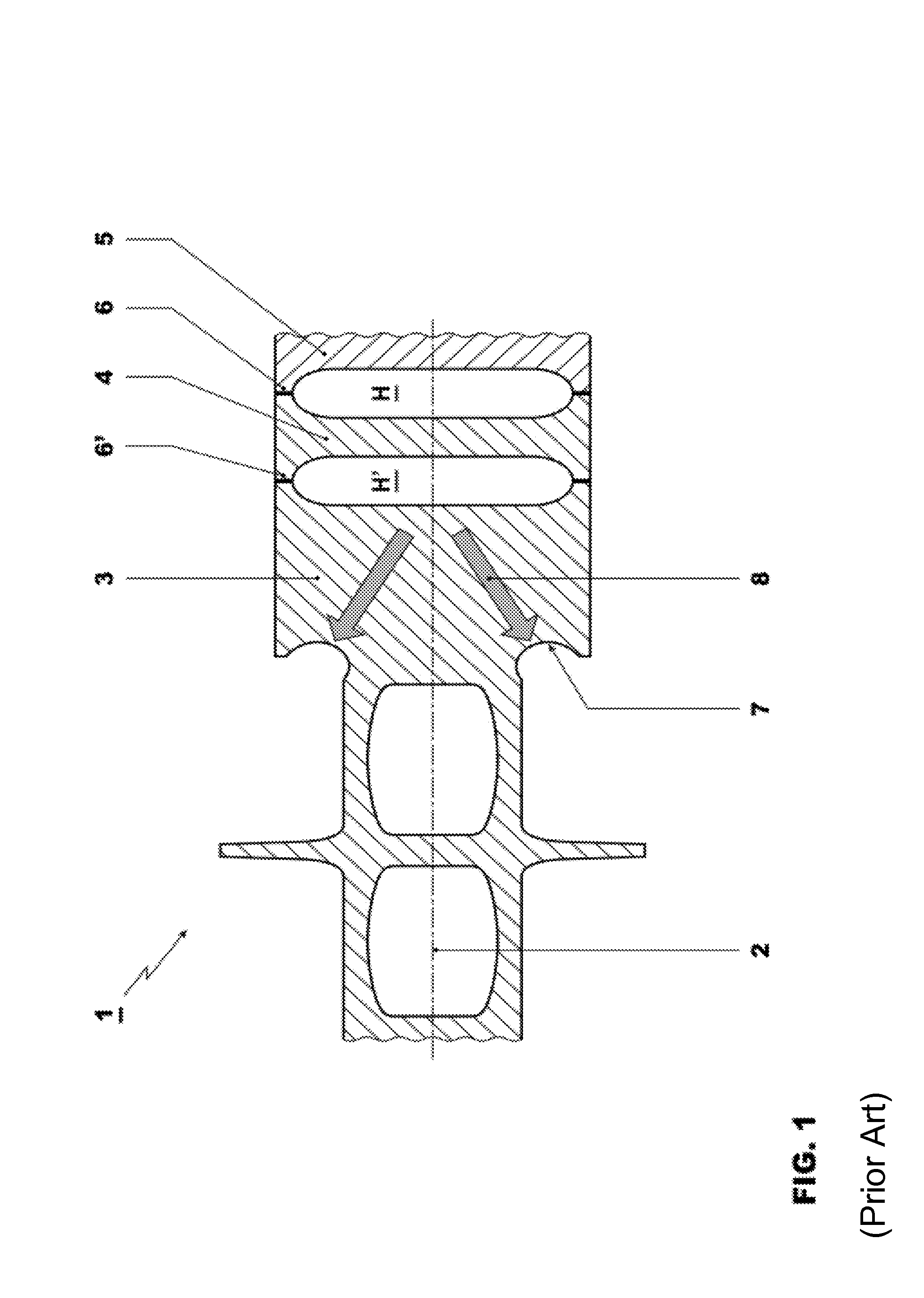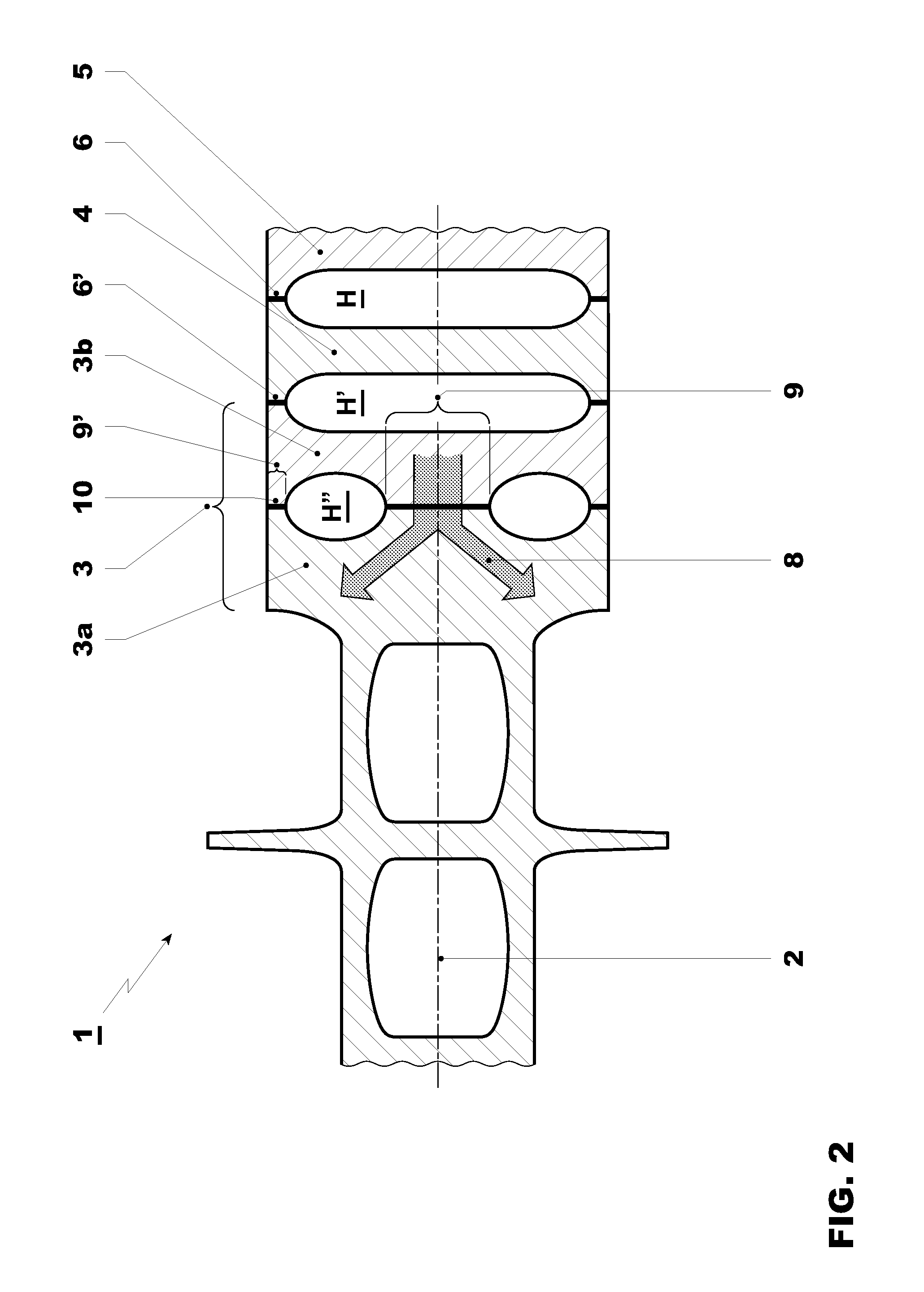Welded rotor of a gas turbine engine compressor
a gas turbine engine and compressor technology, applied in the direction of machines/engines, wind motors with perpendicular air flow, waterborne vessels, etc., can solve the problems of more difficult realization of internal cooling via holes, and achieve the effects of reducing production costs, reducing manufacturing costs, and increasing heat discharg
- Summary
- Abstract
- Description
- Claims
- Application Information
AI Technical Summary
Benefits of technology
Problems solved by technology
Method used
Image
Examples
Embodiment Construction
[0034]FIG. 2 shows in longitudinal cross section a gas turbine compressor rotor 1 with a rotor axis 2. The rotor 1 comprises a multiplicity of rotor disks, of which only rotor disks 3, 4 and 5 are shown in the figure. The rotor disks are constructed in each case so that they can accommodate at least three blade stages of the compressor. As a result, they differ from rotor disks of a rotor of a so-called “laminar” design which extend over only one blade stage. In their middle, rotor disks 4 and 5 have a recess in each case which together form a cavity H after the joining together of the disks. The rotor disks 4 and 5 are interconnected by means of a weld seam 6 between the cavity H and the radially outer surface of the disks 4 and 5. The rotor disk 3 of the rotor of the prior art is realized according to the invention by two individual rotor disks 3a and 3b which in comparison are less solidly formed. In the depicted example, the rotor disks 3a and 3b are the rotor disks of a compres...
PUM
| Property | Measurement | Unit |
|---|---|---|
| heat-conducting | aaaaa | aaaaa |
| temperatures | aaaaa | aaaaa |
| weld shrinkage | aaaaa | aaaaa |
Abstract
Description
Claims
Application Information
 Login to View More
Login to View More - R&D
- Intellectual Property
- Life Sciences
- Materials
- Tech Scout
- Unparalleled Data Quality
- Higher Quality Content
- 60% Fewer Hallucinations
Browse by: Latest US Patents, China's latest patents, Technical Efficacy Thesaurus, Application Domain, Technology Topic, Popular Technical Reports.
© 2025 PatSnap. All rights reserved.Legal|Privacy policy|Modern Slavery Act Transparency Statement|Sitemap|About US| Contact US: help@patsnap.com



